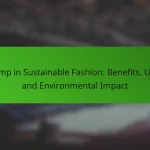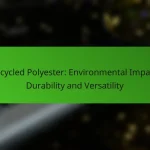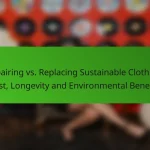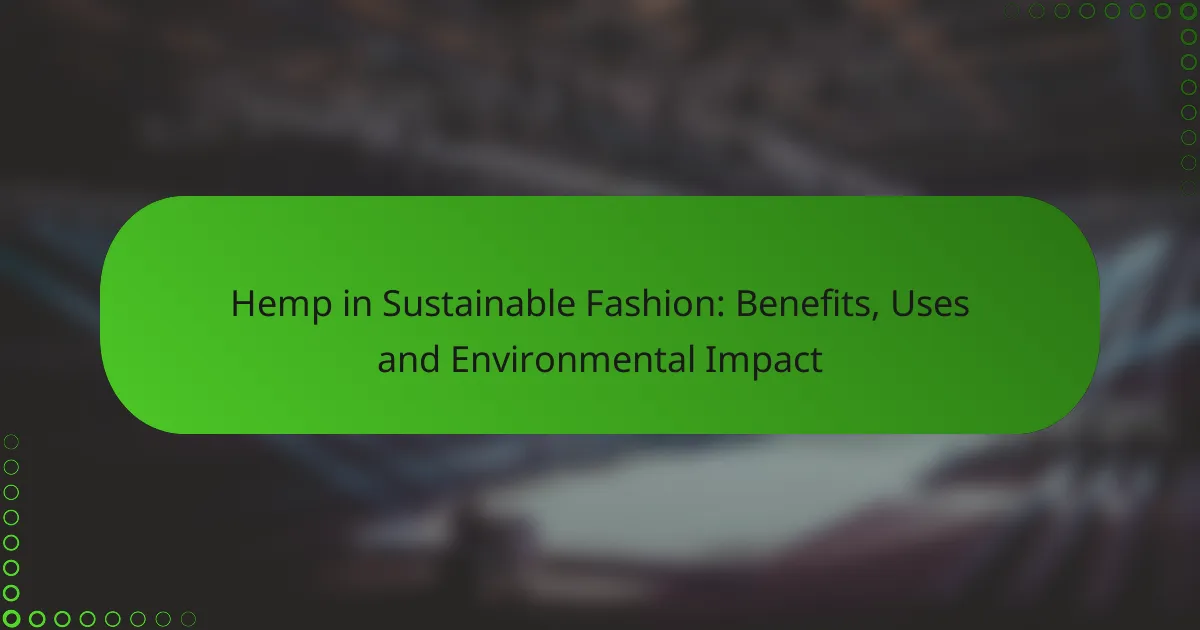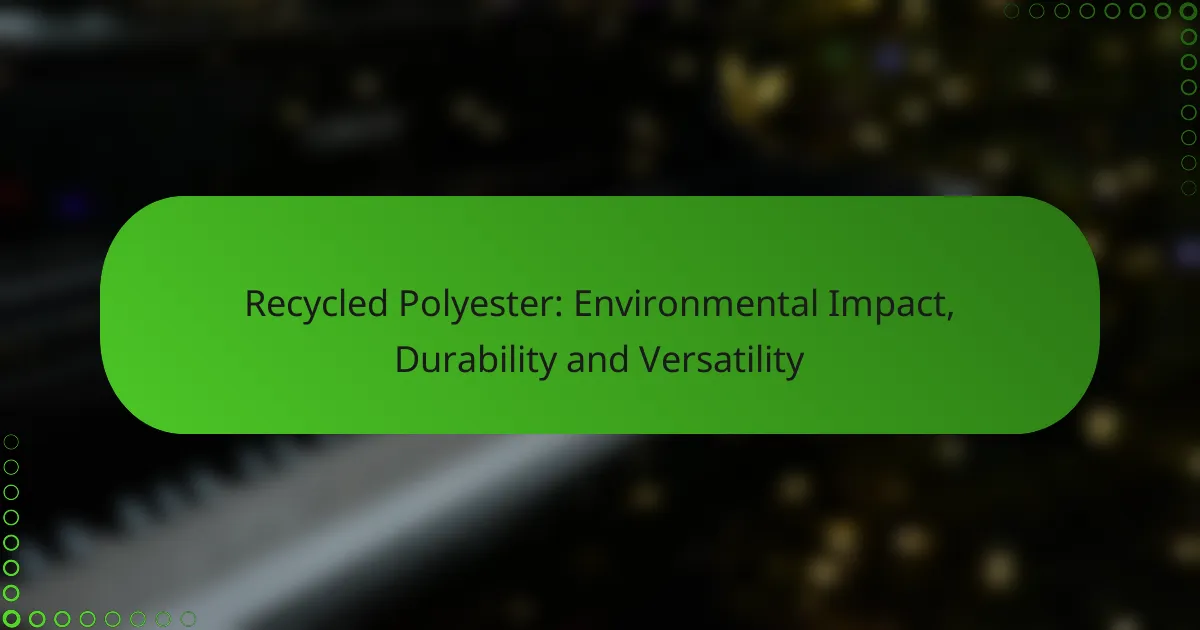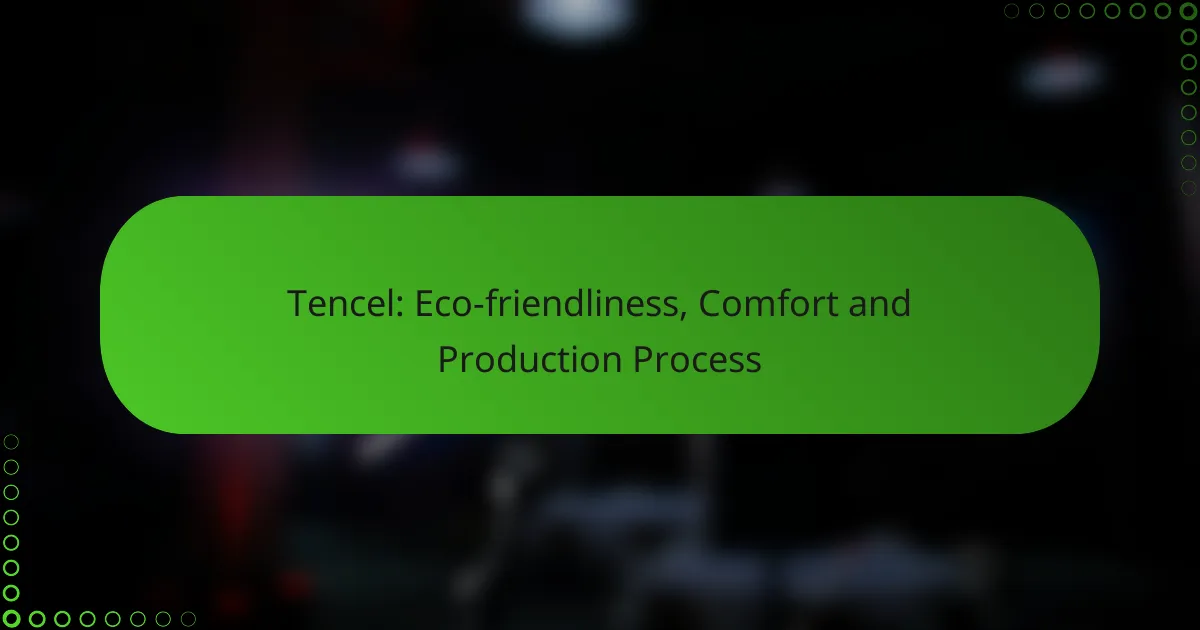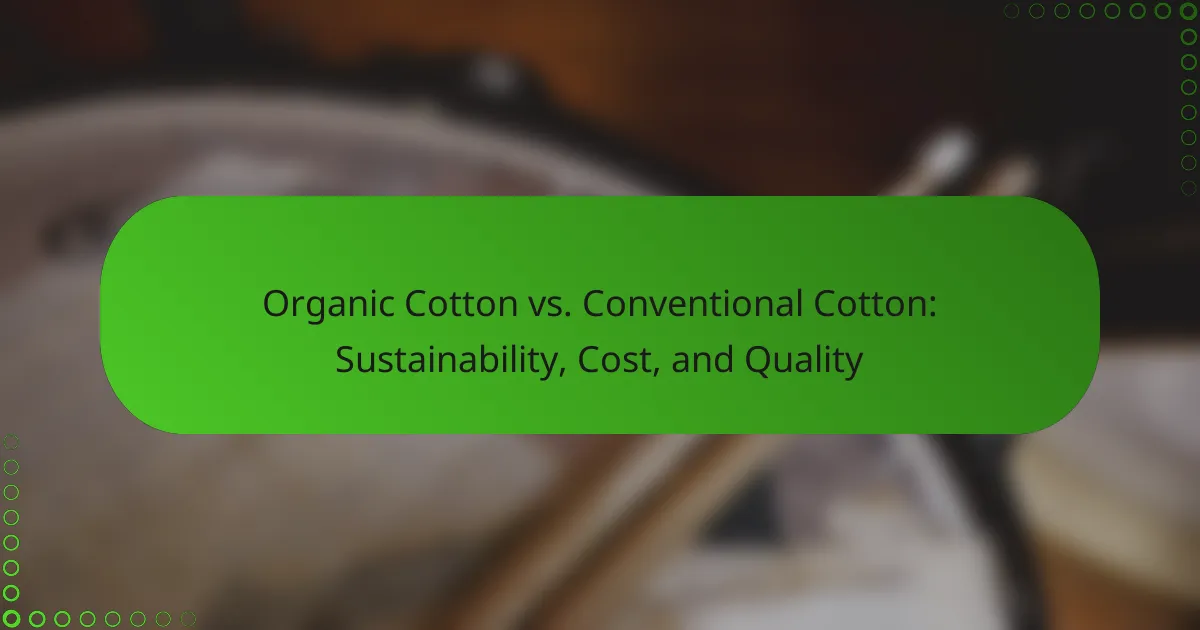Bamboo fabric is an eco-friendly textile option, known for its sustainable cultivation that requires minimal water and chemicals. With benefits such as softness, moisture-wicking properties, and hypoallergenic qualities, it has become a favored choice for both clothing and home textiles. Proper care is essential to maintain its durability and natural properties, ensuring longevity and continued comfort.

How does bamboo fabric impact the environment?
Bamboo fabric has a significant environmental impact due to its sustainable cultivation and processing methods. It requires less water and fewer chemicals compared to conventional textiles, making it a more eco-friendly choice for consumers.
Low water consumption
Bamboo plants require minimal water to grow, often thriving in areas with limited rainfall. This low water consumption is beneficial in regions facing water scarcity, as bamboo can be cultivated without depleting local water resources.
In comparison to cotton, which can require several thousand liters of water per kilogram, bamboo’s water needs are significantly lower, making it a more sustainable option for fabric production.
Biodegradable properties
Bamboo fabric is biodegradable, meaning it can decompose naturally over time without harming the environment. This characteristic reduces landfill waste and contributes to a circular economy.
When disposed of, bamboo fabric breaks down into organic matter, enriching the soil rather than contributing to pollution, unlike synthetic fabrics which can take hundreds of years to decompose.
Carbon sequestration
Bamboo plants are effective at carbon sequestration, absorbing carbon dioxide from the atmosphere during their growth. This ability helps mitigate climate change by reducing greenhouse gases.
Forests of bamboo can sequester more carbon per hectare than many traditional trees, making bamboo cultivation a valuable practice for environmental conservation.
Reduced pesticide use
Bamboo is naturally resistant to pests and diseases, which significantly reduces the need for chemical pesticides during its cultivation. This aspect makes bamboo farming more sustainable and safer for surrounding ecosystems.
By minimizing pesticide use, bamboo fabric production helps protect local wildlife and promotes healthier soil and water systems.
Deforestation concerns
While bamboo is often touted as a sustainable resource, there are concerns regarding deforestation if it is not harvested responsibly. Unsustainable practices can lead to habitat destruction and loss of biodiversity.
To mitigate these risks, consumers should look for bamboo products certified by reputable organizations that ensure sustainable harvesting practices, such as the Forest Stewardship Council (FSC).

What are the benefits of using bamboo fabric?
Bamboo fabric offers numerous benefits, including its softness, moisture-wicking abilities, hypoallergenic properties, and durability. These qualities make it a popular choice for clothing and home textiles, appealing to those seeking comfort and sustainability.
Softness and comfort
Bamboo fabric is renowned for its exceptional softness, often compared to silk or cashmere. This luxurious feel makes it ideal for sensitive skin, providing comfort in various clothing items such as shirts, sheets, and undergarments.
The natural fibers of bamboo are smooth and round, which reduces irritation and friction against the skin. This quality enhances the overall wearing experience, especially for those who prioritize comfort in their apparel.
Moisture-wicking properties
One of the standout features of bamboo fabric is its moisture-wicking capability. It can absorb moisture away from the skin, keeping the wearer dry and comfortable, particularly in warm and humid conditions.
This property is beneficial for activewear and sleepwear, as it helps regulate body temperature and prevents the buildup of sweat. As a result, bamboo fabric is an excellent choice for those who lead an active lifestyle or experience night sweats.
Hypoallergenic qualities
Bamboo fabric is naturally hypoallergenic, making it suitable for individuals with allergies or sensitive skin. The fibers are less likely to irritate the skin compared to synthetic materials, reducing the risk of allergic reactions.
This quality is particularly advantageous for baby clothing and bedding, as it provides a gentle option for infants with delicate skin. Choosing hypoallergenic fabrics like bamboo can contribute to a healthier living environment.
Durability and longevity
Bamboo fabric is known for its durability, often lasting longer than traditional cotton. The fibers are strong and resilient, allowing bamboo textiles to withstand regular wear and washing without significant deterioration.
To maximize the longevity of bamboo products, it is advisable to follow care instructions, such as washing in cold water and avoiding harsh detergents. Proper maintenance can help retain the fabric’s softness and appearance over time.

How to care for bamboo fabric?
Caring for bamboo fabric is essential to maintain its softness and durability. Proper washing, drying, and ironing techniques can extend the life of your bamboo textiles while preserving their natural properties.
Washing instructions
When washing bamboo fabric, use a gentle cycle with cold water to prevent shrinkage and maintain the fabric’s integrity. It’s advisable to use a mild detergent that is free from harsh chemicals to avoid damaging the fibers.
Avoid bleach and fabric softeners, as these can degrade the natural qualities of bamboo. If possible, wash bamboo items with similar colors to prevent any dye transfer.
Drying recommendations
For drying bamboo fabric, air drying is the best option to avoid heat damage. Hang the fabric in a shaded area to prevent fading from direct sunlight.
If you choose to use a dryer, set it to a low heat setting and remove the items while they are still slightly damp to minimize wrinkles. Over-drying can lead to stiffness and reduced softness.
Ironing tips
When ironing bamboo fabric, use a low to medium heat setting and ensure the fabric is slightly damp for best results. This helps to smooth out wrinkles without scorching the fibers.
Always iron on the reverse side to protect the fabric’s finish. If necessary, use a pressing cloth to further safeguard against direct heat exposure.

What are the alternatives to bamboo fabric?
Alternatives to bamboo fabric include organic cotton, hemp fabric, and linen fabric. Each of these materials offers unique benefits and considerations regarding sustainability, comfort, and care.
Organic cotton
Organic cotton is grown without synthetic pesticides or fertilizers, making it a more environmentally friendly option compared to conventional cotton. It requires less water and promotes healthier soil, which can lead to better crop yields over time.
When choosing organic cotton, look for certifications such as GOTS (Global Organic Textile Standard) to ensure the fabric meets strict environmental and social criteria. This fabric is soft, breathable, and suitable for sensitive skin, making it a popular choice for clothing and home textiles.
Hemp fabric
Hemp fabric is made from the fibers of the hemp plant, which grows quickly and requires minimal water and pesticides. This makes it one of the most sustainable textiles available, as it can thrive in a variety of climates and soil conditions.
Hemp is known for its durability and strength, making it ideal for items that require longevity, such as bags and workwear. Additionally, hemp fabric becomes softer with each wash, enhancing comfort over time.
Linen fabric
Linen fabric is derived from the flax plant and is highly valued for its breathability and moisture-wicking properties. It is an excellent choice for warm climates, as it helps keep the body cool and dry.
While linen is biodegradable and requires less water than cotton, it can be prone to wrinkling. To maintain its appearance, consider washing it in cold water and air drying it. Linen’s natural texture and drape make it a popular option for summer clothing and home decor.

How does bamboo fabric compare to synthetic fabrics?
Bamboo fabric offers a more sustainable alternative to synthetic fabrics, which are often derived from petroleum. While synthetic materials can contribute to environmental pollution and are less biodegradable, bamboo fabric is generally more eco-friendly and biodegradable, making it a preferable choice for environmentally conscious consumers.
Environmental footprint
The environmental footprint of bamboo fabric is significantly lower than that of synthetic fabrics. Bamboo is a fast-growing plant that requires minimal water and no pesticides, leading to less environmental degradation. In contrast, synthetic fabrics like polyester are made from non-renewable resources and can take hundreds of years to decompose.
Additionally, the production process for bamboo fabric can be less energy-intensive compared to that of synthetic alternatives. However, it’s crucial to choose bamboo fabrics that are produced sustainably, as some manufacturing processes can still involve harmful chemicals.
Comfort levels
Bamboo fabric is known for its softness and breathability, making it comfortable to wear in various climates. It has natural moisture-wicking properties, which help keep the skin dry and cool, especially in warmer conditions. This is a significant advantage over many synthetic fabrics, which can trap heat and moisture.
Moreover, bamboo fabric is hypoallergenic and gentle on the skin, making it suitable for individuals with sensitivities or allergies. Its natural properties contribute to a comfortable wearing experience, whether for everyday clothing or activewear.
Durability
When it comes to durability, bamboo fabric can be quite resilient, although it may not match the longevity of some synthetic fabrics like nylon or polyester. With proper care, bamboo garments can last for several years, but they may require more gentle washing and handling to maintain their quality.
It’s advisable to wash bamboo fabric in cold water and avoid high heat when drying to prevent shrinkage and damage. Overall, while bamboo fabric is durable, consumers should be aware of its care requirements to ensure longevity.

